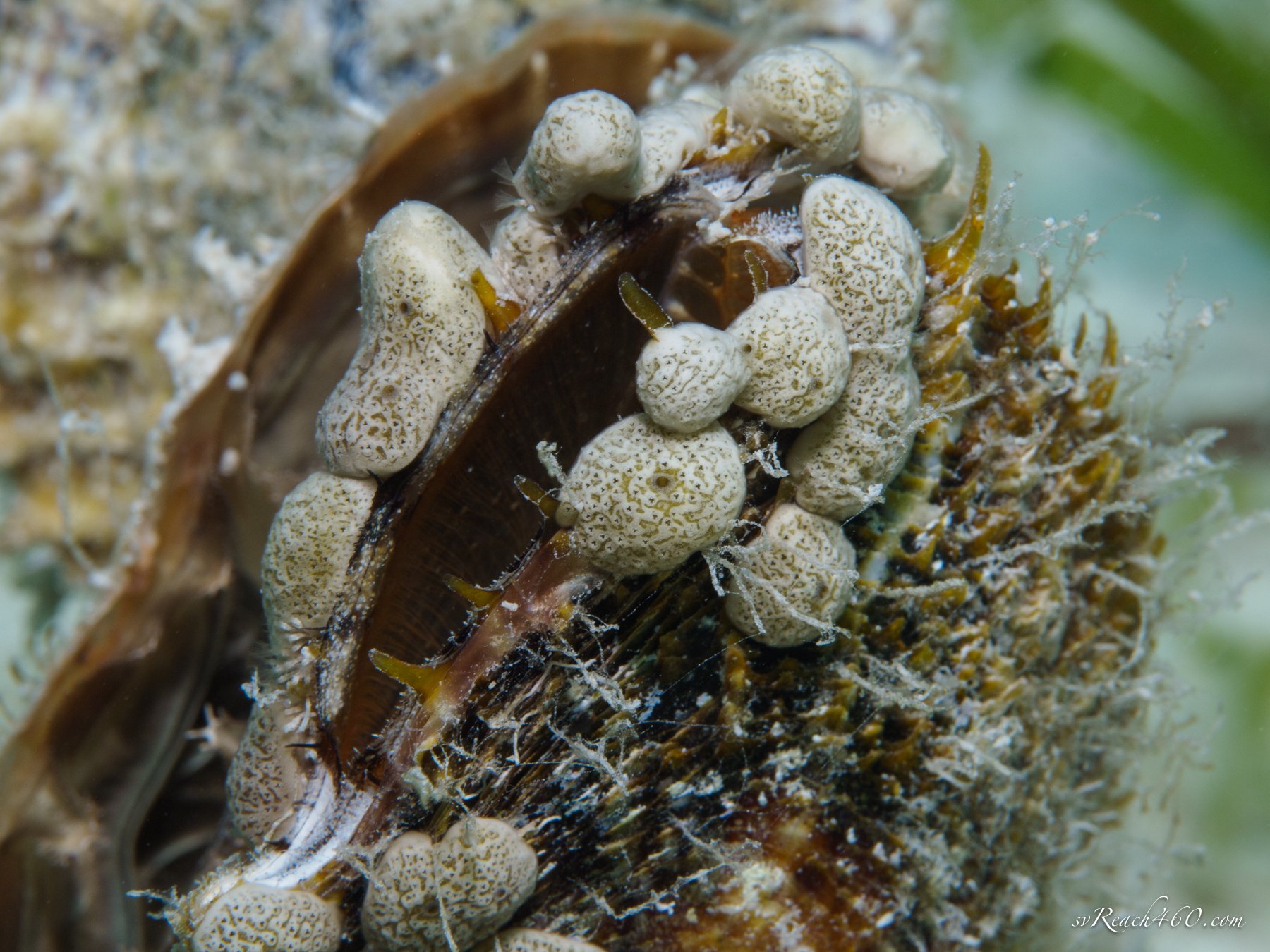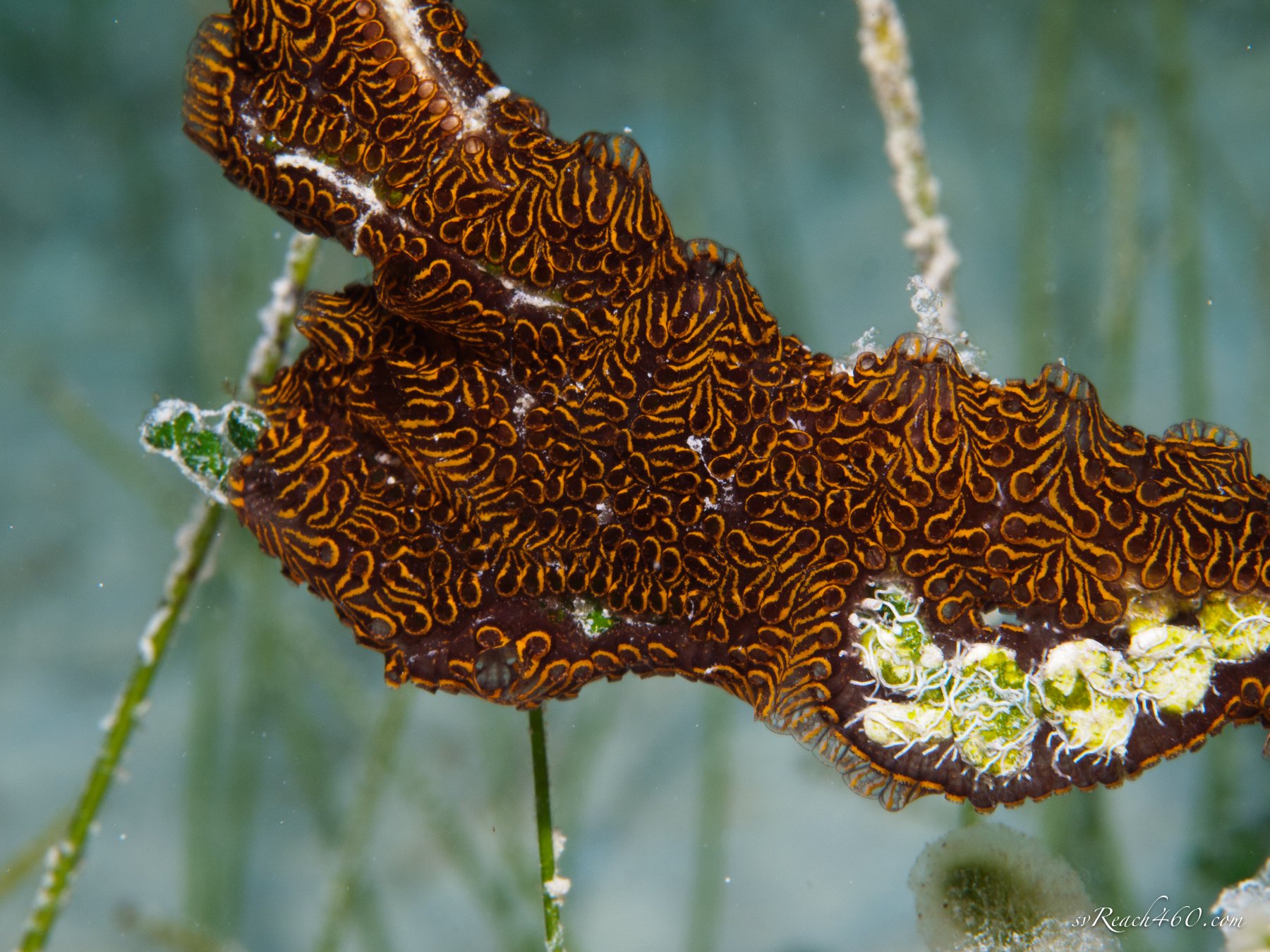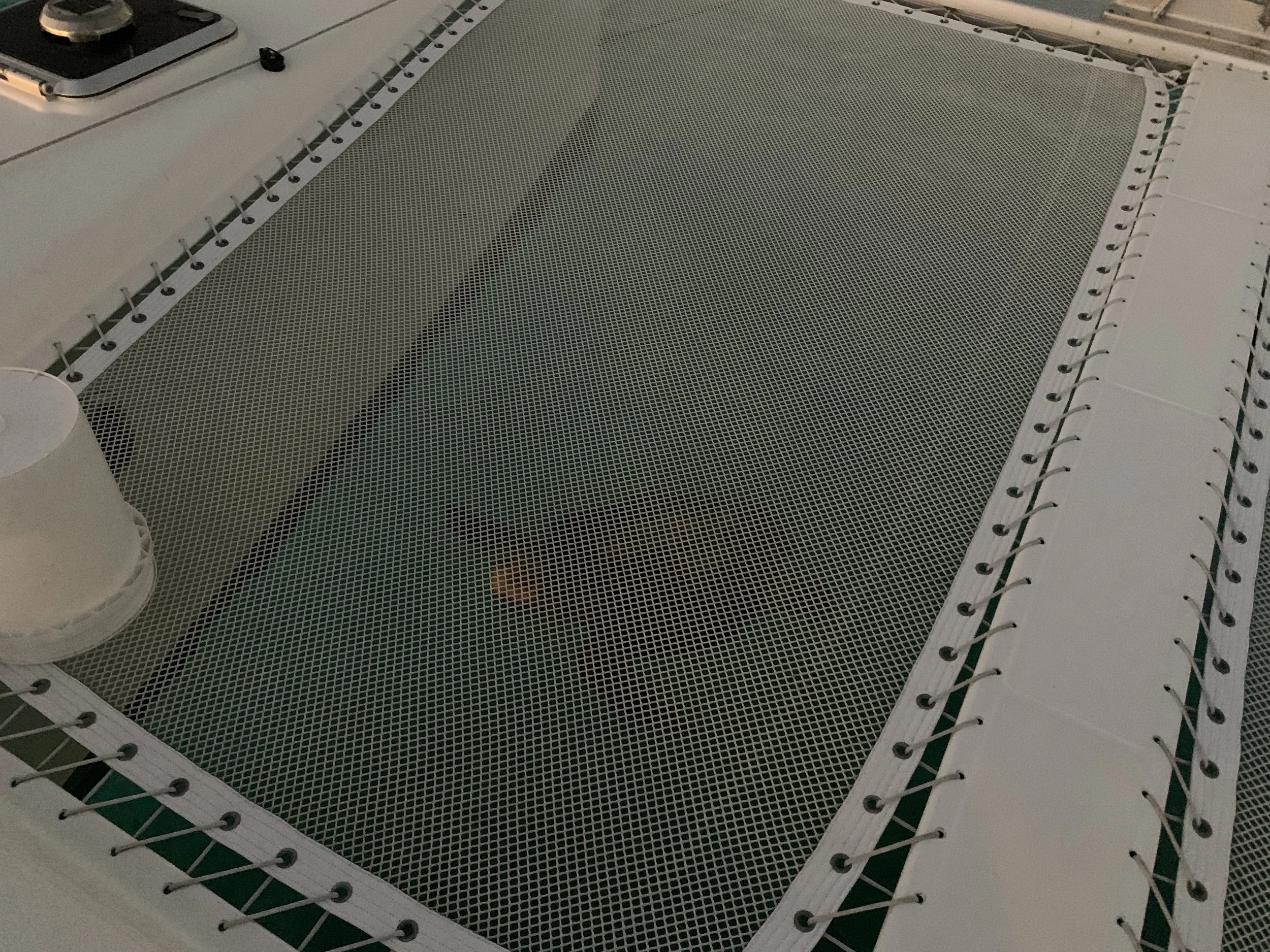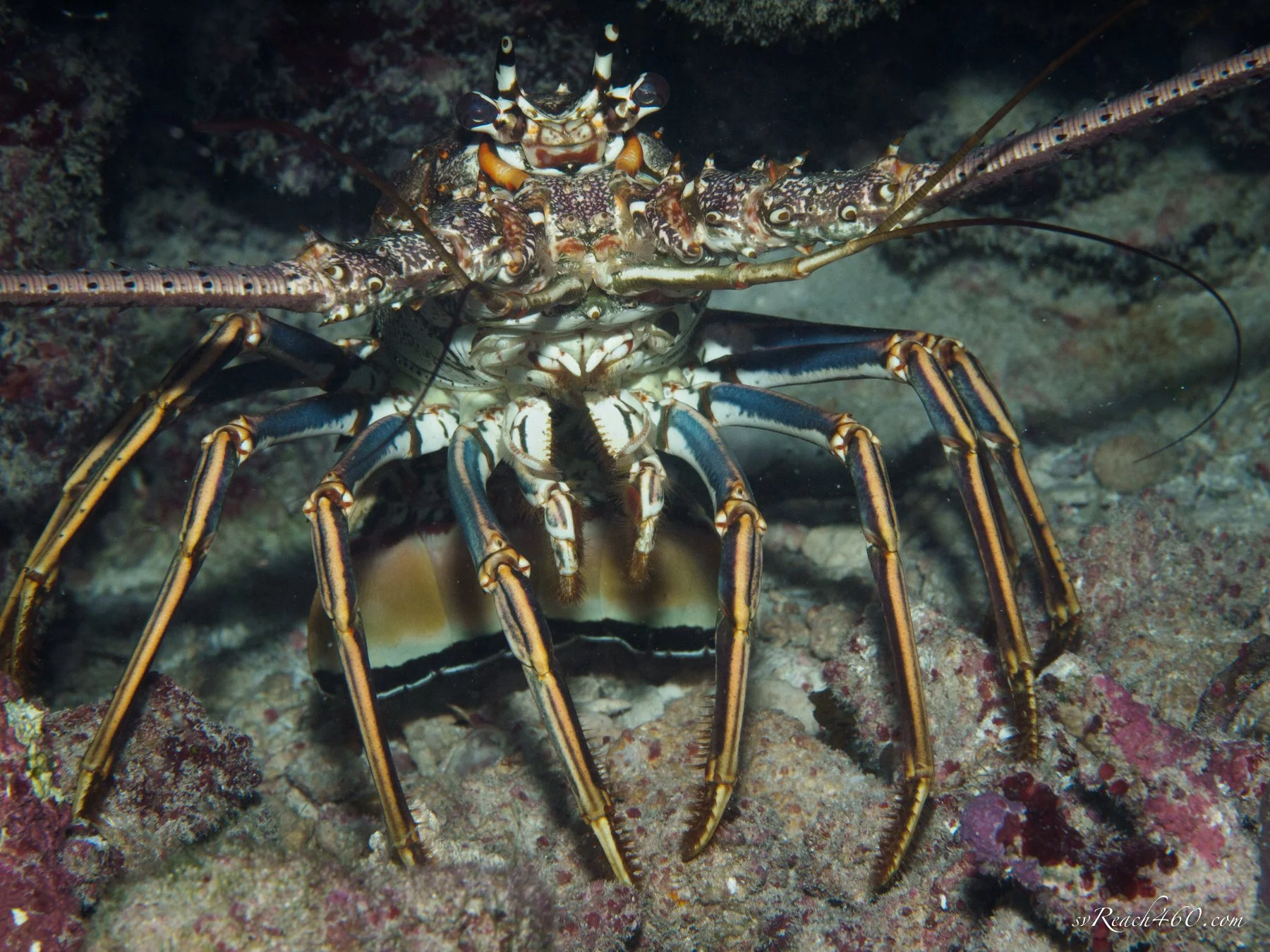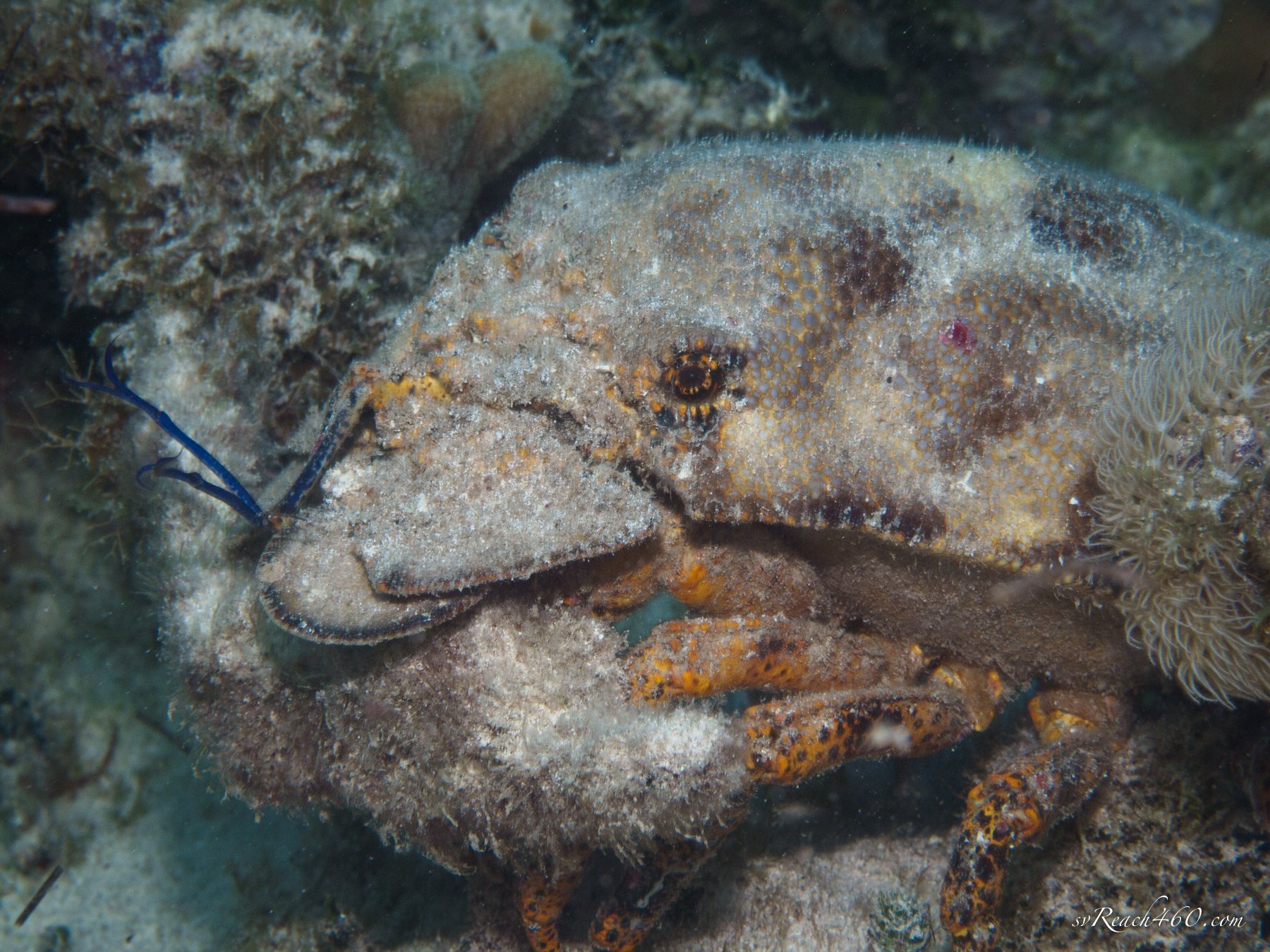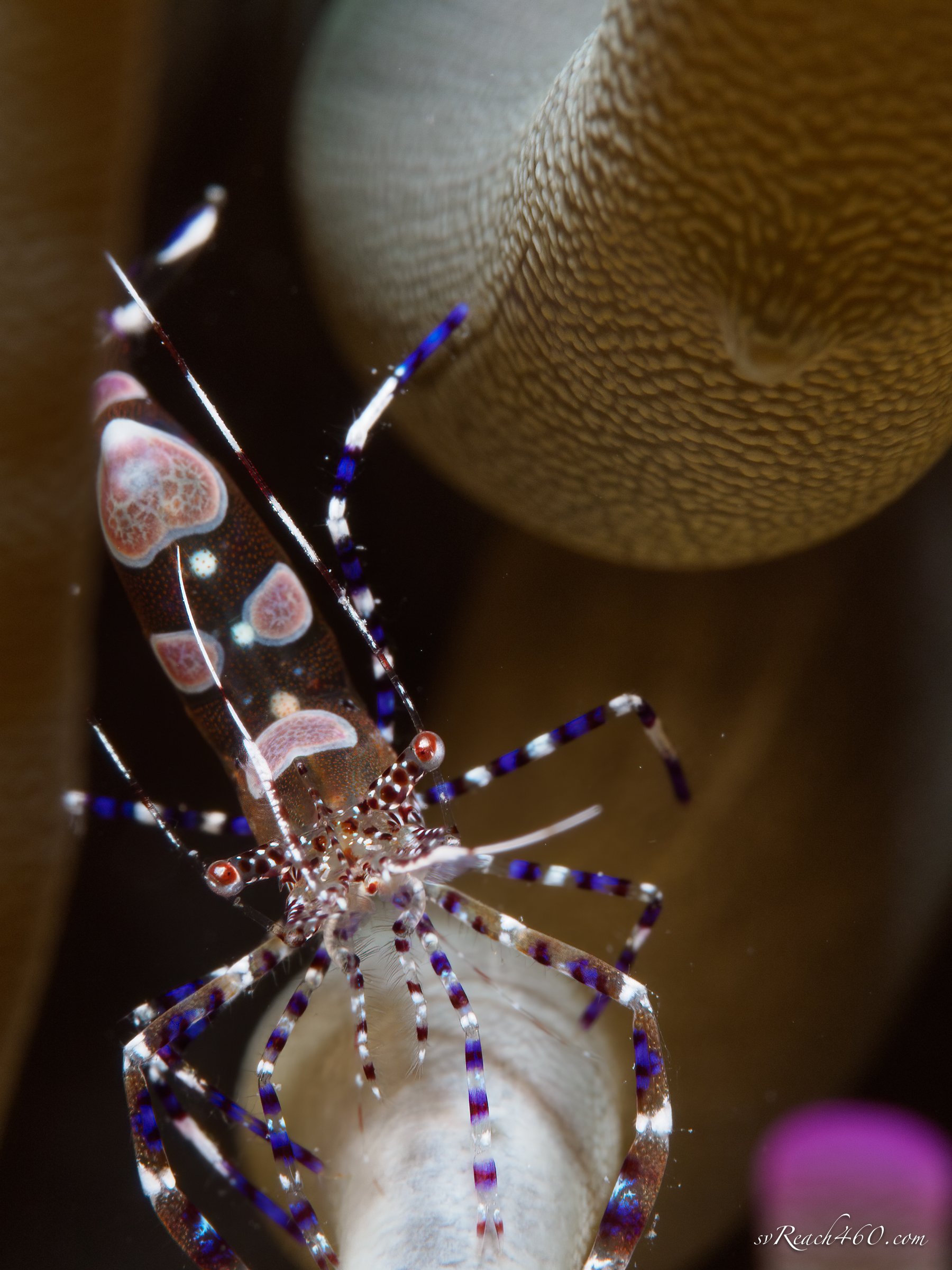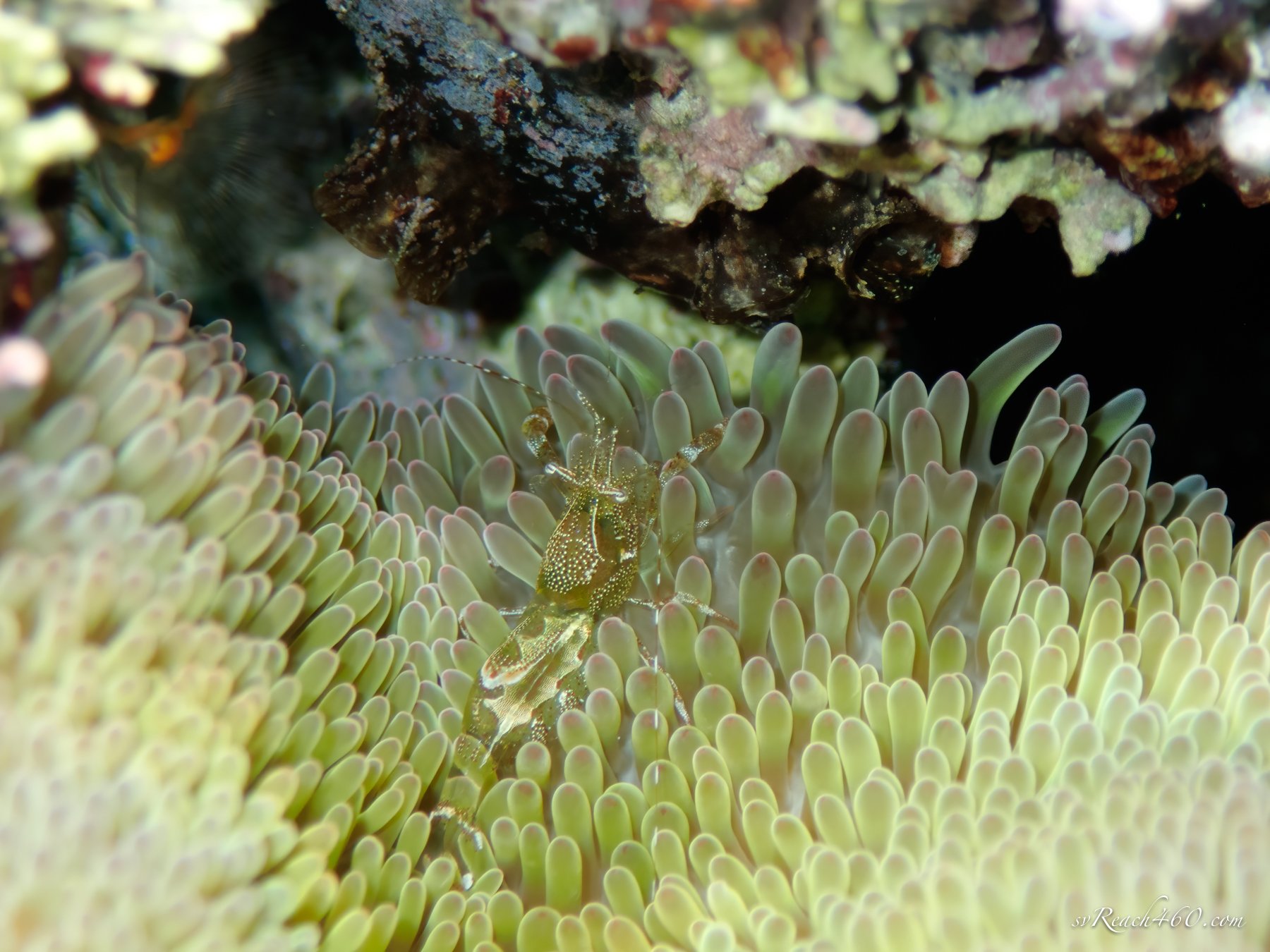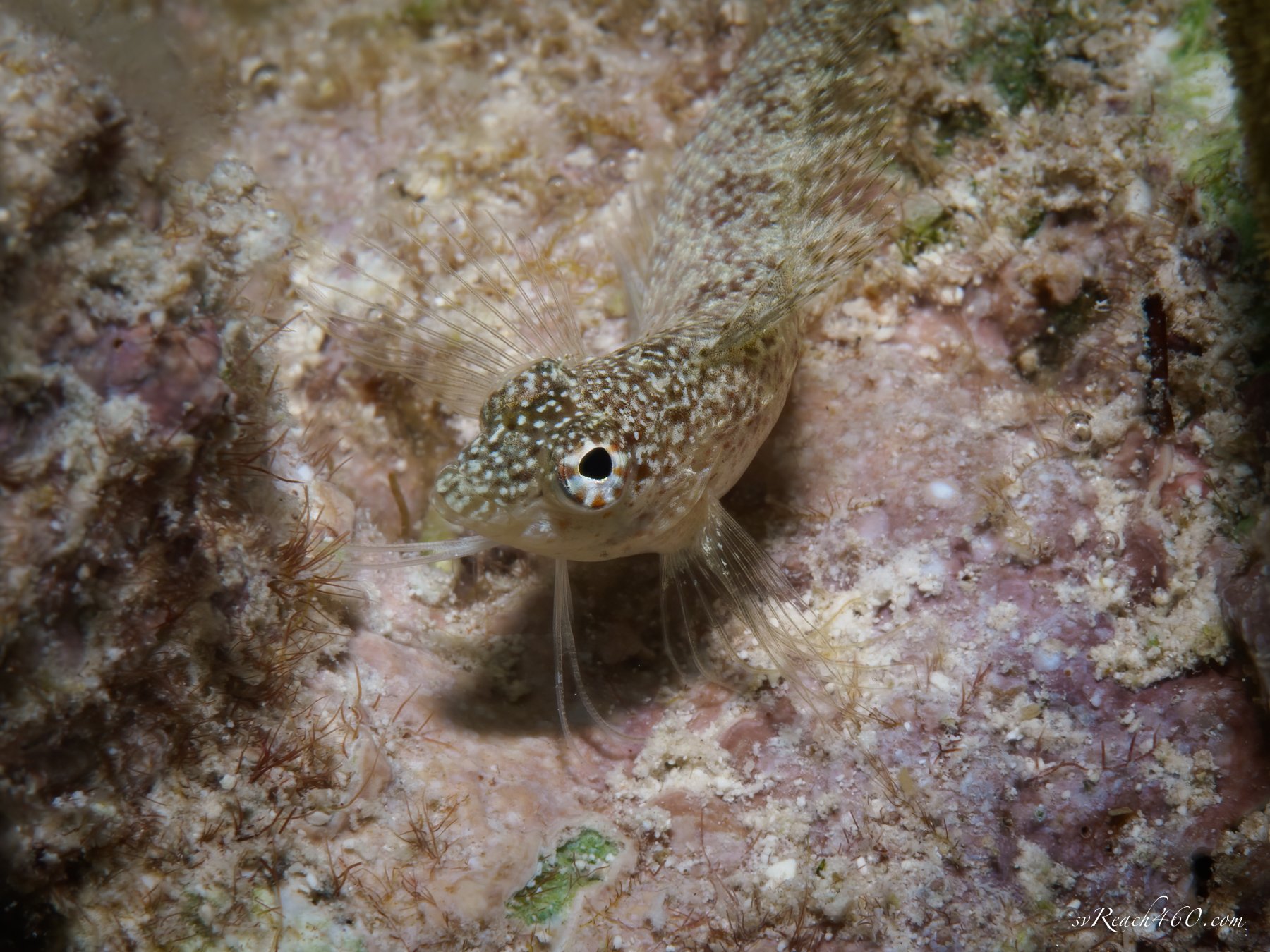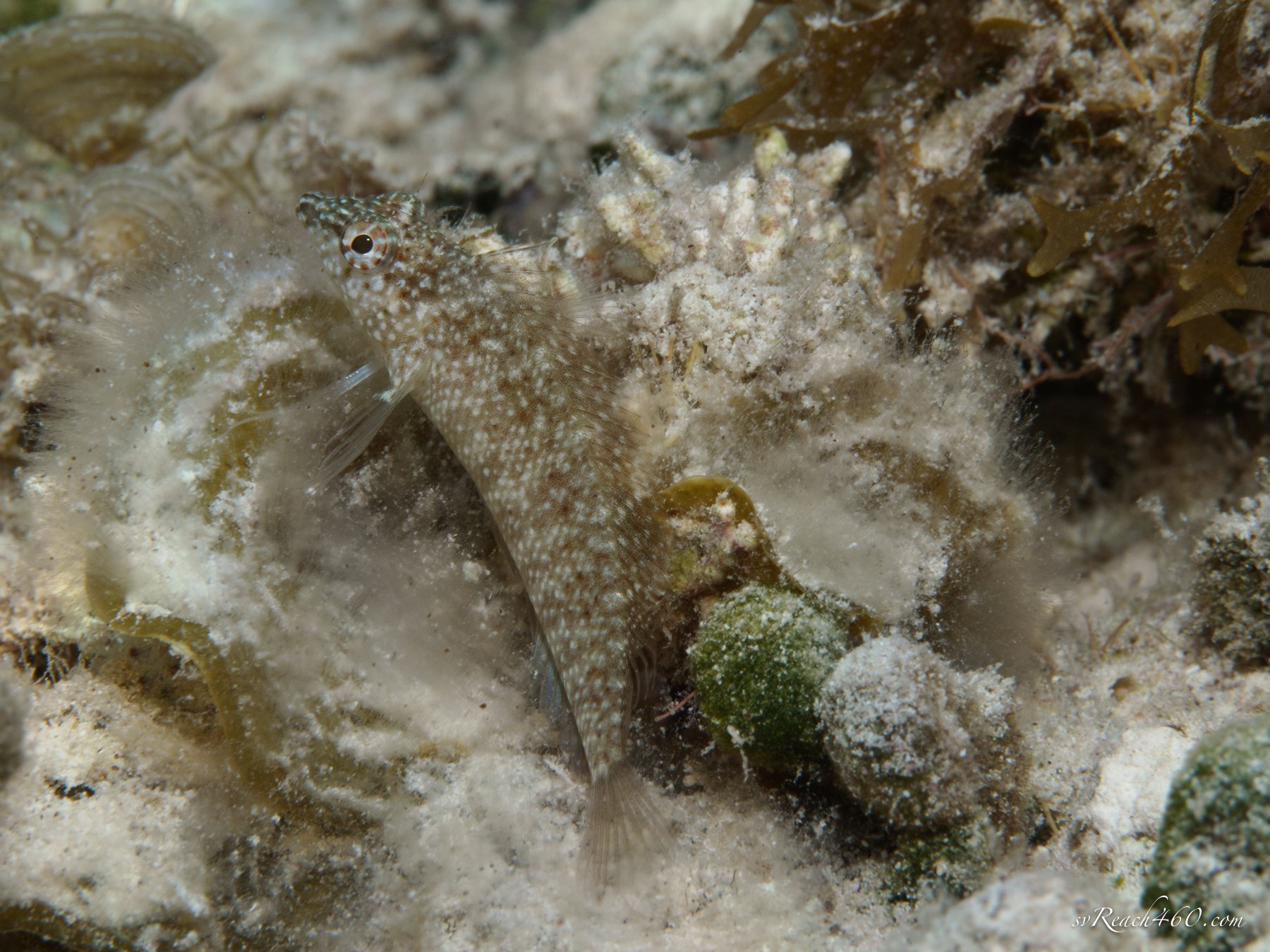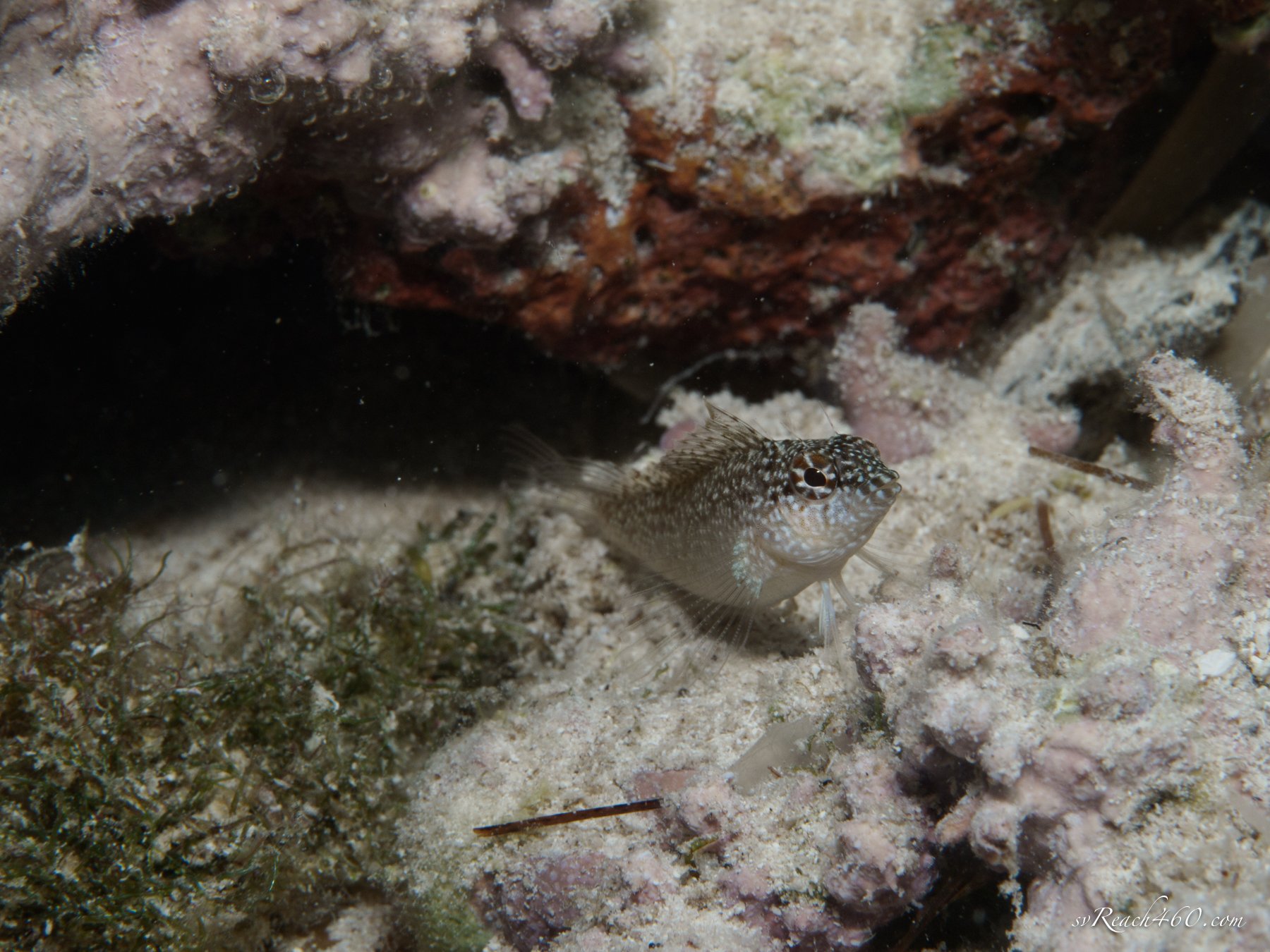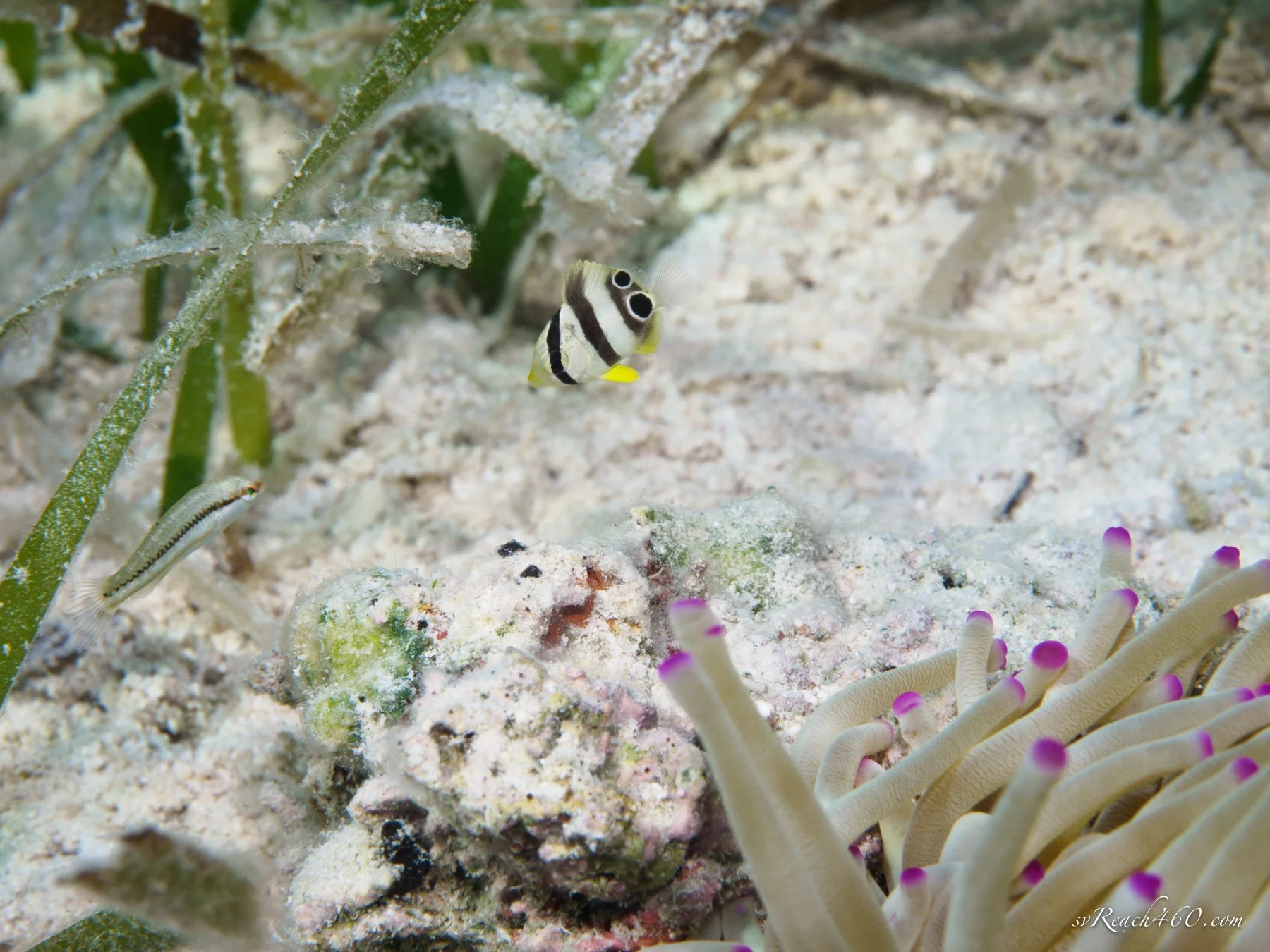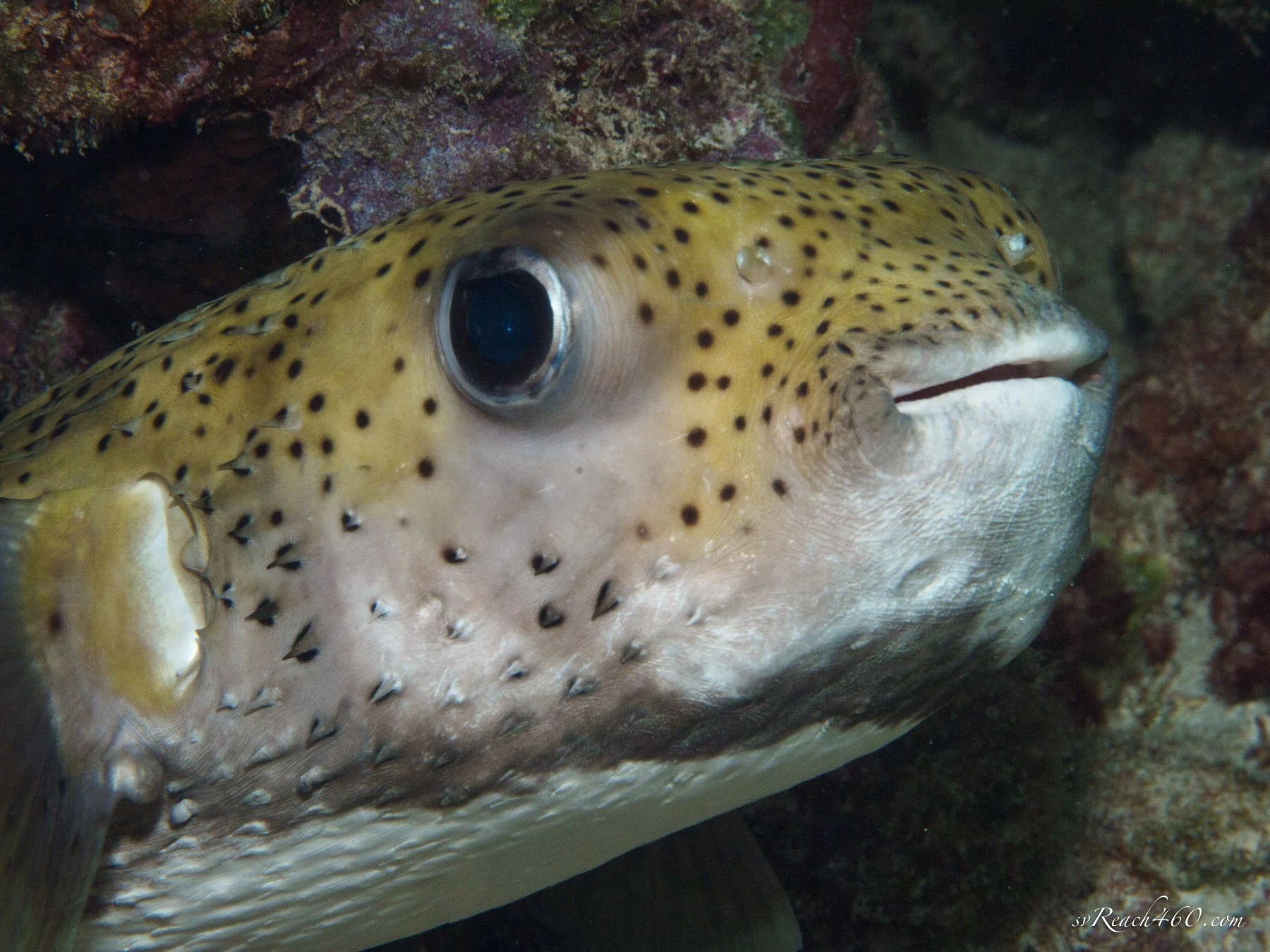Back Underwater
French angelfish
We arrived back in the Bahamas in mid-November. It is great to be back to enjoy some nice weather and get underwater almost every day.
After a year of using solely manual camera settings, I’m now very comfortable with finding the conditions that I want (shutter, aperture, ISO) for my nature photography. Underwater, there is the added variable of the strobe (also manually adjusted). This allows for higher apertures and nice macro effects.
Olympus E-PL2 with 60mm macro lens, underwater housing and strobe
My rig is an Olympus micro 4/3 camera with a 60 mm macro lens (120mm full frame equivalent).
The underwater case from Olympus fits this camera body and I use a single, Olympus strobe.
It is neutrally buoyant in the water and easy to use with one hand.
I love using it… and the results!
Tunicates
The first thing that I took a photo of when entering the water was a new (to me) compound tunicate growing on an Atlantic thorny oyster. I have since seen it in other areas and have yet to get a positive ID on this type. It resembles some kind of urn tunicate, but from what I can tell, those are only found in the Pacific.
Compound tunicate
I also found a flat tunicate colony for the first time ~ what amazing colors!
I find tunicates so fascinating! They come in endless shapes and sizes, siphon feed through incurrent and excurrent openings, and are either solitary or colonial. When in colonies, they form together to share a larger excurrent.
Tunicate shared excurrent
Turtles
Next to greet us were the turtles who we see here from year to year. There is a huge loggerhead turtle in one bay who likes to bump up against our boat each evening at sunset.
In another bay lives a very large green turtle, identifiable by an injury to the shell above a rear leg. It is easily the largest green turtle I’ve seen and is very relaxed and chilled out.
Green turtle
The last non-pelagic type of turtle, the hawksbill, turned up on our favorite reef wall in our last anchorage. It was also very chill and allowed a close approach. These portraits are not taken as close as they might seem using the macro lens.
Hawksbill turtle
Crustaceans
We have only seen three lobsters in the month we’ve been here so far. They seem to be scarce this year for unknown reasons. One was a Spanish lobster and all were left to live another day…
Spiny lobster
The cutest crab I’ve seen this year has to be this 1 cm shortfinger hermit crab with pink eyes!
Shortfinger hermit crab
Spotted cleaner shrimp
There are several types of anemones found in the patch reefs where I tend to snorkel - giant / corkscrew / knobby / sun / branched.
I always check them out to search for reef critters.
Various types of clinging crabs and shrimp use anemones for shelter and symbiosis.
There is even a tiny crab about the size of a corn kernel associated with elkhorn coral called… wait for it… the elkhorn coral crab.
Elkhorn coral crab
Squat shrimp
Blennies
It’s no secret that blennies are my favorite reef fish! I’ve already had some added excitement this year for finding a new (to me) and quite rare blenny, the Bahamas species of blackcheek blenny.
I was looking at the squat shrimp above in an anemone, and saw a dark, striped looking critter on the wall beyond. Lucky for me, it didn’t dash away and I was able to get a few decent photos.
Blackcheek blenny
Internet friends from the Smithsonian Tropical Research Institute (STRI) helped me identify the blackcheek in the shy blenny complex.
It turns out that this has been only been photographed clearly on 3 occasions and they are currently trying to learn more about it, so this sighting and photos will be included in publications on the topic.
Won’t that be a fun addition to my CV - Lol!
Blackcheek blenny
The only other blenny I’ve seen here this month is the rosy blenny… just everywhere!
Baby fish
A lot of the snorkeling I do in shallow waters are essentially a fish nursery. There are tiny fish that often bear no resemblance to their adult counterparts. Other seem to grow into their fins!
Enjoying a few occasions with a snorkeling buddy, Shiera was a great spotter and discovered this teeny, tiny cubbyu drum. It was swimming its paces, spastic as they do, similar to the juvenile foureye butterflyfish.
I was just glad that there was no lionfish nearby after a traumatic memory of them decimating juvie drum populations that I’d seen in the past.
Juvenile cubbyu
2015 - Juvenile highhat for comparison
I just learned from my STRI friends that this is a cubbyu juvenile, whereas I originally thought it was a highhat.
They are virtually identical at this stage, except that the cubbyu has clear pectoral fins and a black oval between the eyes, while the highhat has partially black pectoral fins and a dark band between the eyes.
Very subtle difference, but now obvious once pointed out.
I’ve had many other adorable interactions so far, like this tulip snail booking across the sand under our boat, a friendly porcupinefish that liked getting close to my camera, and a huge Atlantic stingray that was shadowing me for a while. Check out each of their eyes!
Phew, I have finally caught up on my photo processing & ready for the next dive!!
True tulip snail
Porcupinefish
Atlantic stingray


